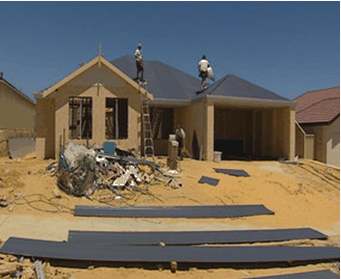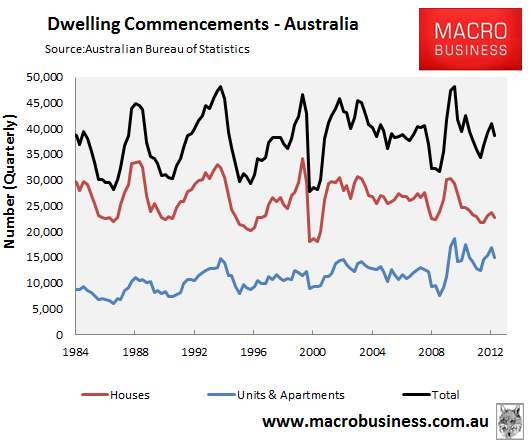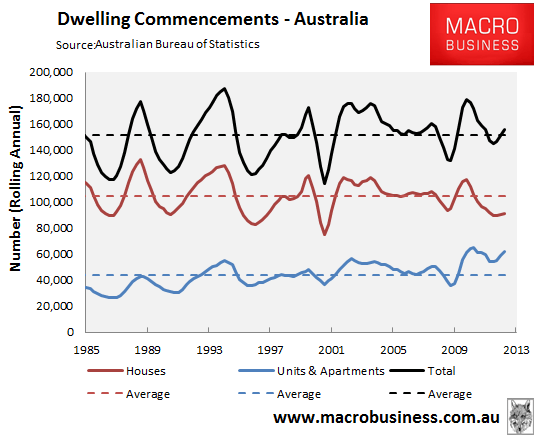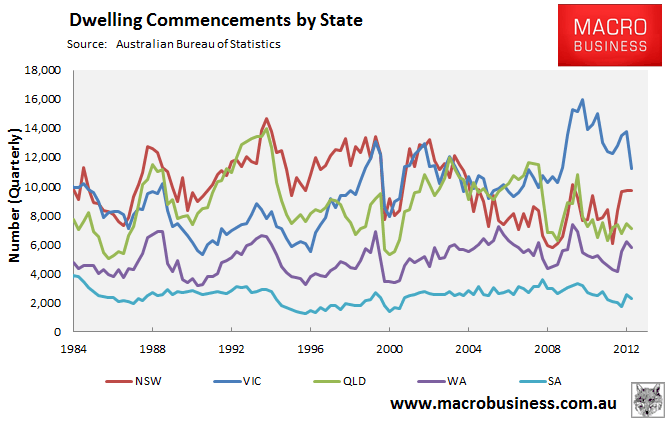
I only just realised that today’s Building Activity data released by the Australian Bureau of Statistics (ABS) also contained dwelling commencements figures for the March quarter of 2013 (these used to be contained in a seperate release), which provides a more forward looking assessment of the state of the housing construction industry than the dwelling completions data analysed earlier today.
According to the ABS, the total number of dwellings commenced over the March quarter fell by 5.5%, with detached house commencements down by 3.8% and apartment commencements 11.5% lower (see next chart).

Again, the news is better in annual terms, with overall dwelling commencements rising by 12.6% over the year, with detached house commencements up 4.9% and unit & apartment commencements up 20.5%. Unlike the dwelling completions data, the level of dwelling commencements is slightly above 30-year average, although constrauction rates remain low given the 45% increase in Australia’s population over this period (see next chart).

Another worry is that virtually all of the recent gains in dwelling commencements have been in the unit & apartment segment, with the more labour-intensive detached house segment remaining highly depressed.
At the state level, the fall in overall dwelling commencements over the March quarter was driven by Victoria (-18.4%), although Queensland (-4.9%), Western Australia (-6.3%) and South Australia (-8.8%) were also down, whereas New South Wales (+0.1%) was broadly flat (see next chart).

As with the dwelling completions data, summarised earlier, there’s not much joy in this release, with dwelling commencements (particularly the employment sensitive detached house segment) also failing to launch despite the significant cuts to interest rates and first home buyer subsidies from New South Wales and Queensland. Again, land prices are too high, which is pricing many would-be buyers out of the market.

